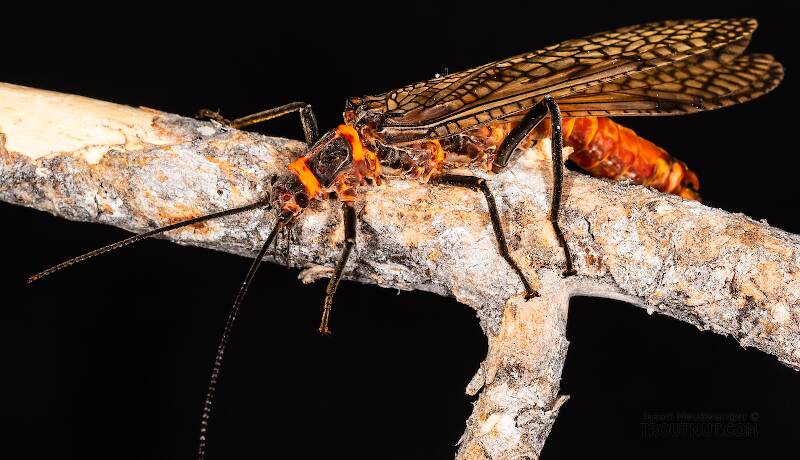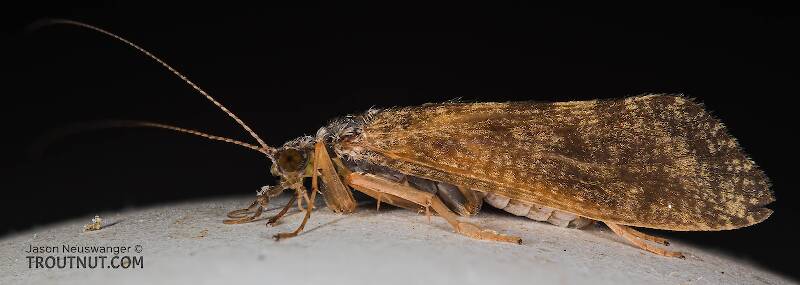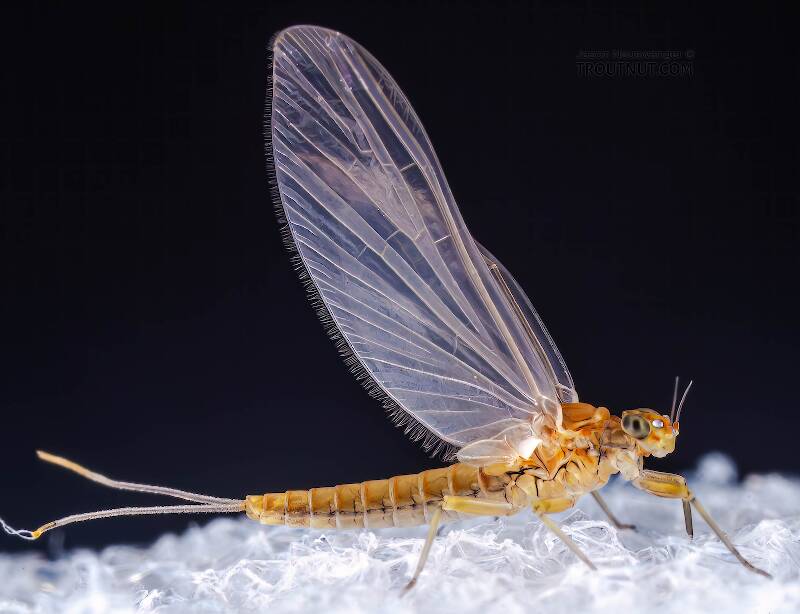
Salmonflies
Pteronarcys californica
The giant Salmonflies of the Western mountains are legendary for their proclivity to elicit consistent dry-fly action and ferocious strikes.
Featured on the forum


Troutnut is a project started in 2003 by salmonid ecologist Jason "Troutnut" Neuswanger to help anglers and
fly tyers unabashedly embrace the entomological side of the sport. Learn more about Troutnut or
support the project for an enhanced experience here.

I'm guessing this specimen is in the genus Acerpenna because of the very sharp costal process on her hind wing. I'm guessing pygmaea because it is the most common species.
Editor note: Not Acerpenna. This is most likely Baetis. See comments on this male specimen for rationale. Also compare with the female specimen associated with it.
Editor note: Not Acerpenna. This is most likely Baetis. See comments on this male specimen for rationale. Also compare with the female specimen associated with it.
Flytyer0423 on Aug 20, 2009August 20th, 2009, 4:54 pm EDT
when the one wing is like the one in the picture thats called a crippled mayfly?
(vistit my website @) www.natureboyoutdoors.weebly.com

